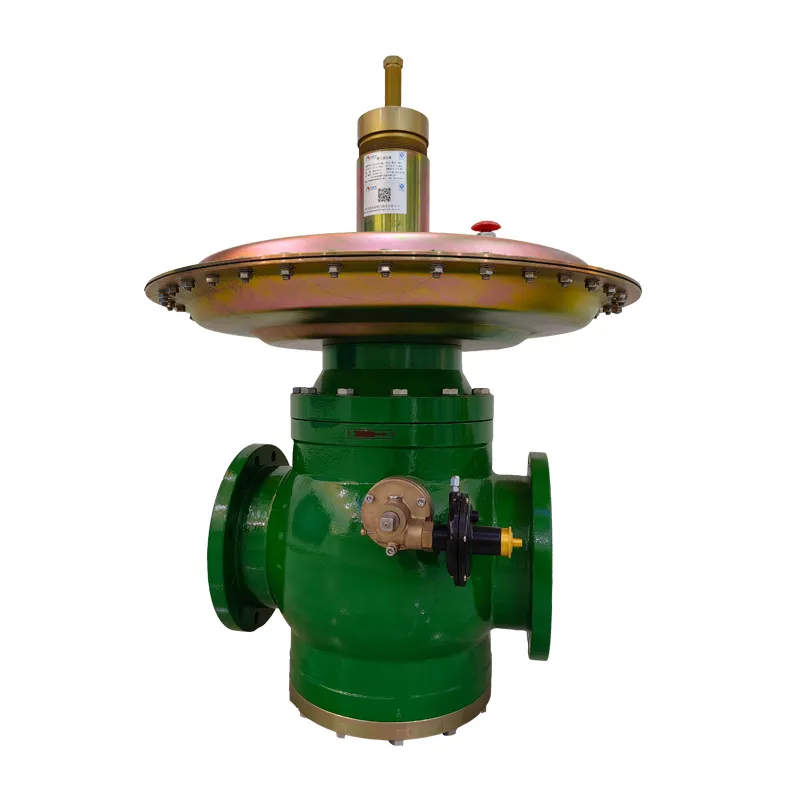
Nov . 18, 2024 09:55
Back to list
Regulating Valve for Efficient Fluid Control and Management
Regulating Valves The Unsung Heroes of Fluid Control
When it comes to the world of engineering and fluid dynamics, there are a multitude of components that work tirelessly behind the scenes to ensure everything runs smoothly. Among these components, regulating valves play a pivotal role in controlling the flow, pressure, and temperature of various fluids across a range of applications—from residential plumbing to complex industrial processes.
What is a Regulating Valve?
A regulating valve, often referred to as a control valve, is a mechanical device used to control the flow of fluids by varying the size of the flow passage as directed by a controller. These valves are crucial in maintaining the desired output within a system by adjusting their position in response to changes in pressure or flow rate. They can either open or close to allow more or less fluid to pass through, depending on the requirements of the system.
Types of Regulating Valves
There are several types of regulating valves, each designed for specific applications
1. Globe Valves These are among the most commonly used control valves, characterized by a spherical body shape. Globe valves are excellent for regulating flow in a pipeline because of their ability to provide precise control.
2. Ball Valves Ball valves allow for both on/off control and flow regulation. They are recognized for their durability and fast operation but are generally less effective for fine flow control compared to globe valves.
.
4. Diaphragm Valves Utilizing a flexible diaphragm to stop flow, these valves excel in applications that involve corrosive fluids or slurries. They provide a tight seal and are resistant to contamination.
صمام تنظيم

5. Check Valves Although not traditionally classified as regulating valves, check valves ensure that fluid flows in only one direction, preventing backflow that can disrupt system operation.
Applications of Regulating Valves
The versatility of regulating valves allows them to be found in numerous applications. In residential settings, they control water flow in heating systems, ensuring that temperatures remain stable. In the industrial sector, regulating valves optimize manufacturing processes by maintaining proper pressure, flow rates, and temperatures during chemical reactions. They are essential in industries such as oil and gas, pharmaceuticals, food and beverage, and water treatment.
The Importance of Proper Selection and Maintenance
Choosing the right type of regulating valve for a specific application is crucial. Factors such as fluid type, temperature, pressure, and required flow rates must be considered to ensure optimal performance and longevity. Incorrect selection can lead to inefficiencies, increased operational costs, and even system failures.
Maintenance is another critical aspect of managing regulating valves. Regular inspection and servicing can prevent breakdowns that could lead to downtime or catastrophic failures. Common maintenance practices include cleaning, lubricating moving parts, and checking for signs of wear or damage.
The Future of Regulating Valves
As technology advances, the field of regulating valves is also evolving. The integration of smart sensors and actuators allows for real-time monitoring and control of flow parameters. This not only enhances the efficiency of fluid systems but also contributes to energy savings and reduced environmental impact.
In conclusion, while they may often go unnoticed amidst the more visible components of fluid systems, regulating valves are essential for ensuring that everything operates as intended. Their importance cannot be overstated, as they play a significant role in maintaining system stability and efficiency across countless applications. Whether in our homes or in complex industrial facilities, regulating valves remain the unsung heroes of fluid control technology.
Latest news
-
Safety Valve Spring-Loaded Design Overpressure ProtectionNewsJul.25,2025
-
Precision Voltage Regulator AC5 Accuracy Grade PerformanceNewsJul.25,2025
-
Natural Gas Pressure Regulating Skid Industrial Pipeline ApplicationsNewsJul.25,2025
-
Natural Gas Filter Stainless Steel Mesh Element DesignNewsJul.25,2025
-
Gas Pressure Regulator Valve Direct-Acting Spring-Loaded DesignNewsJul.25,2025
-
Decompression Equipment Multi-Stage Heat Exchange System DesignNewsJul.25,2025

